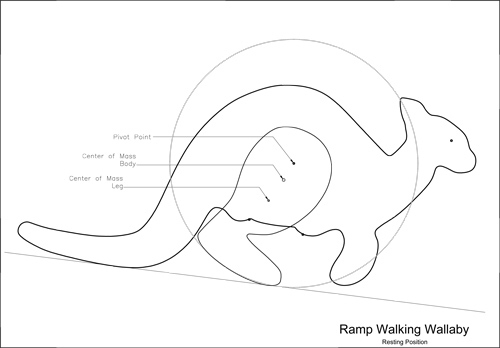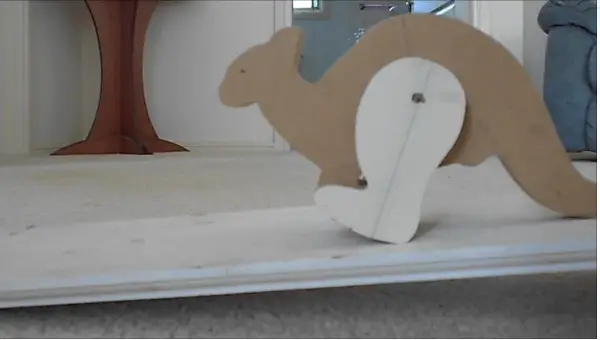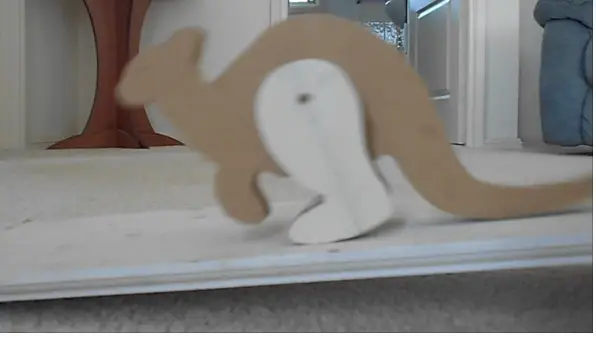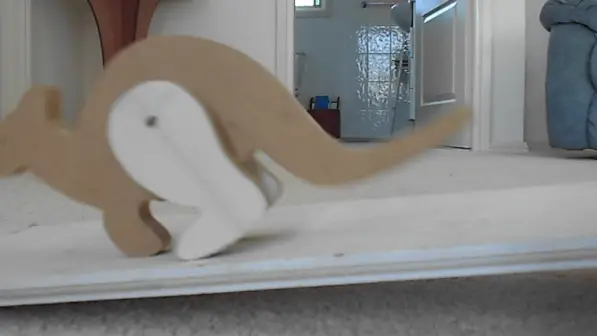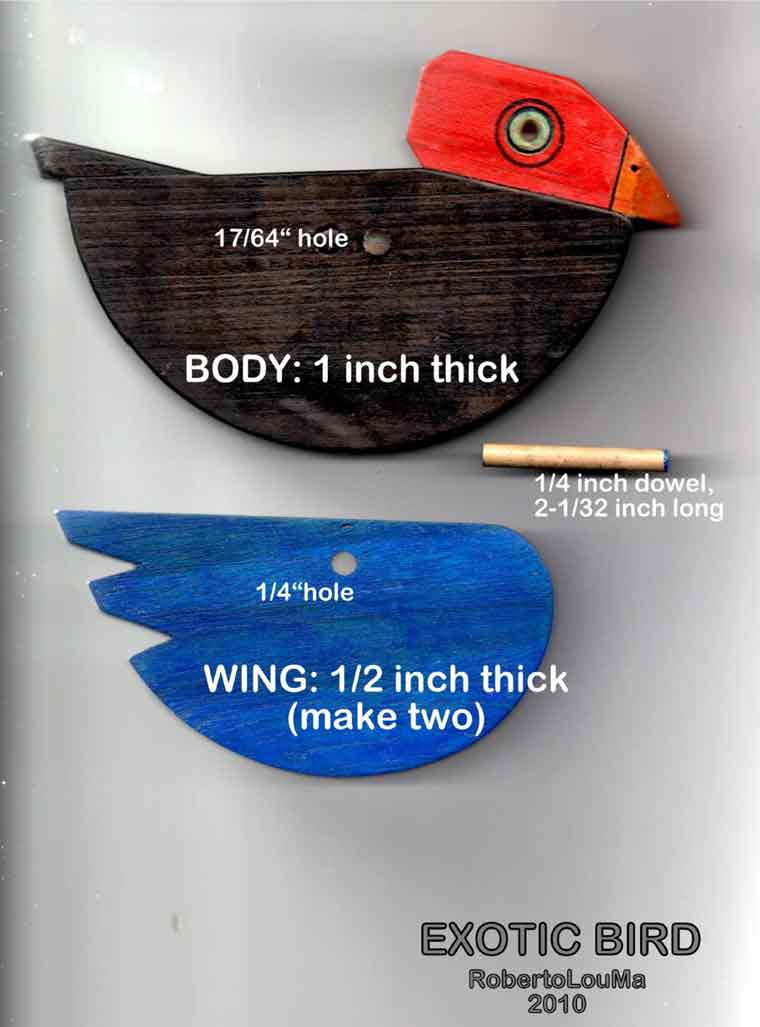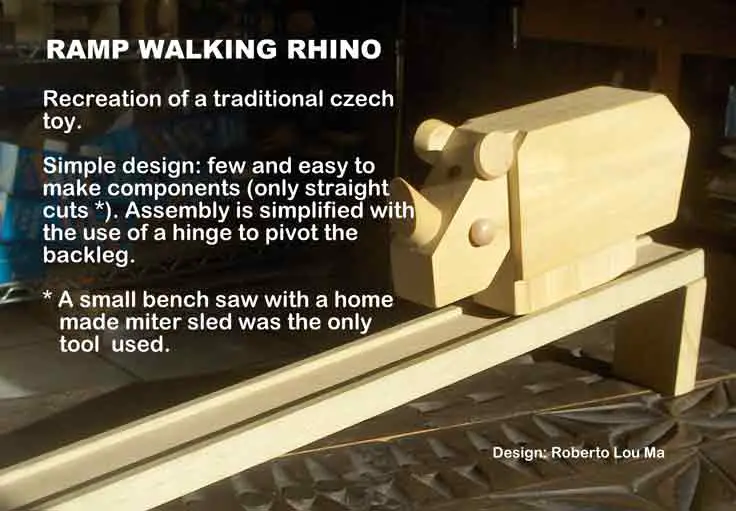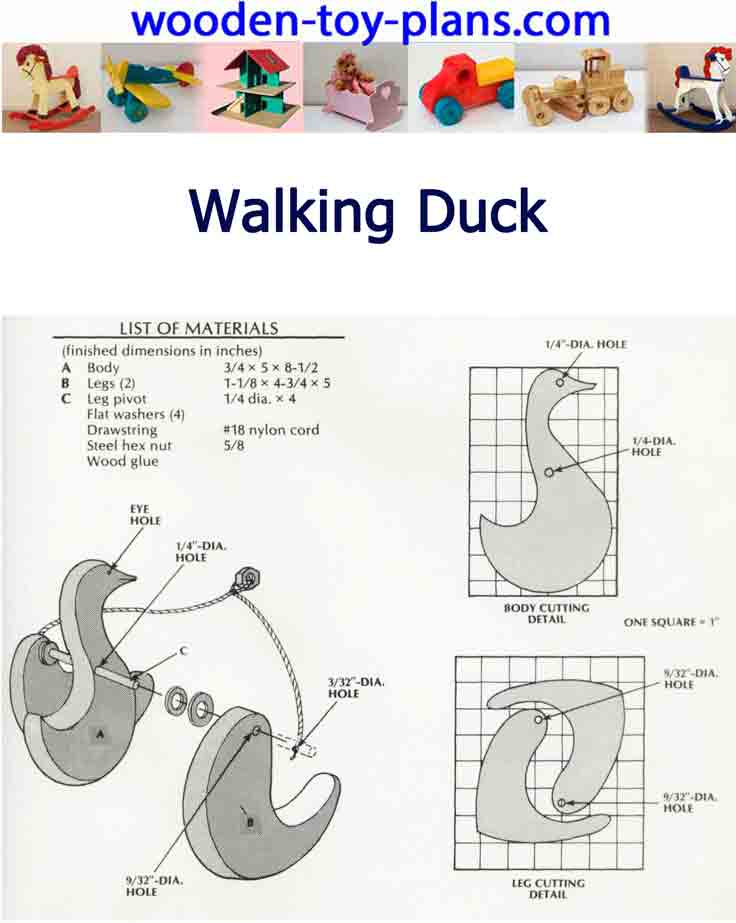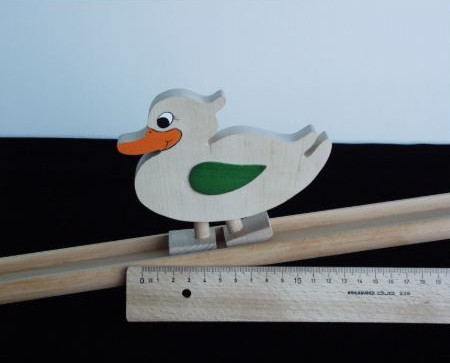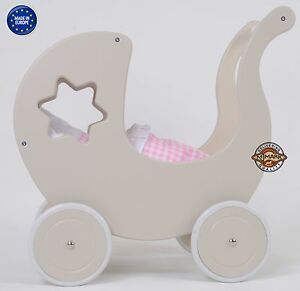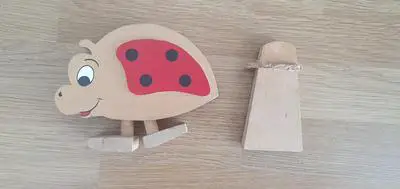Ramp Walking Toys
I have made a few ramp walking toys, not always successful, mind you. It seems to be a matter of luck and persistence.
Many years ago, in my travels around Australia, I saw an example of a ramp walking wallaby.
It was quite small, about the size of a matchbox, and all you had to do was to touch the tail to get it to walk down the ramp.
A short history of my journey into the art and craft of making ramp walking toys. Also known as passive dynamic walker.
As much as I like making things, enjoy making things that move even more.
It all started with the Ramp Walking Rhino, a design by Robert Lou Ma. I made one, and it kind of worked. I think the problem was a small hinge, which I did not have, so I used a piece of piano hinge instead.
The challenge with these toys is to minimize friction, and the hinge was not sturdy enough to prevent the back leg rubbing on the body.
Tried making a different kind of hinging mechanism, but that ruined the geometry and I lost interest.
No hinges in this one, and I recently bought a scroll saw, so this seemed to be a good pattern to practice on.
It worked pretty well this time, but not being able to leave well enough alone, decided to figure out how and why it worked. If I can observe and describe the action, then I have a better understanding of how it works.
So here goes:
I made a copy in AutoCAD and pin pointed the center of mass of the body in relation to the pivot point and the center of mass of the legs, as shown in the image above.
Using movie maker to pause the video and take a screen shot, cropped each frame to remove the background distractions.
On the horizontal, this is the natural resting position. On the
ramp, give it a little shove and it starts walking.
The legs have hit the back stop and it is about to tilt forward.
On the
front paws, about to tilt just a little more to allow the legs to
rotate forward. If the ramp is slightly too steep, it does in fact
tilt onto it’s nose. Makes me think the front paws need a little
modification.
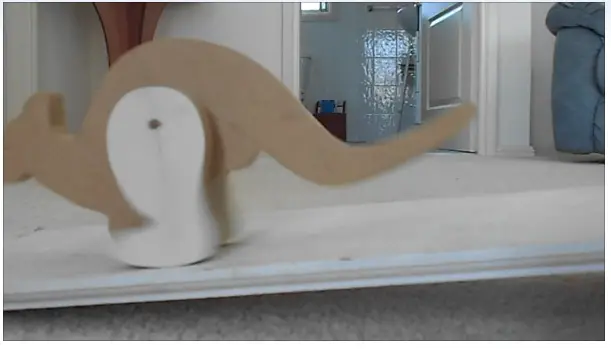 Frame 4
Frame 4The legs have come forward and hit the front stop. It is about to rock backwards.
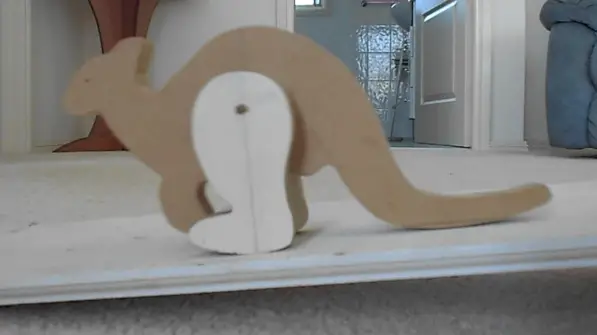 Frame 5
Frame 5Tilting backwards and the tail hits the ramp. Starts to slide forward.
Wonder if I should put a little wheel in the tail?
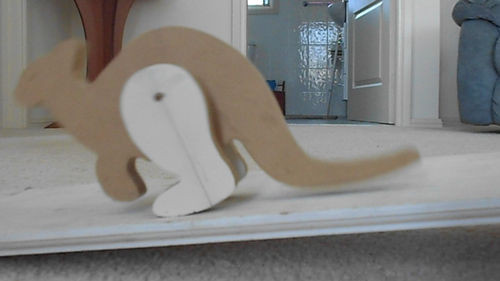 Frame 6
Frame 6Starts all over again – very much the same as frame 2 – The legs have hit the back stop and the tail is lifting off the ramp.
And so it goes. If the ramp was long enough, it would go on forever.
More Ramp Walking Toys
A ramp walking toy made by Roberto Lou Ma.
I have made a line drawing template that you can print onto a piece of paper and paste it onto a piece of wood and cut it out with a scroll saw.
This design is my first attempt at making a ramp walking toy. Designed by Roberto Lou Ma, retired civil engineer, cartoonist, automata & toy maker.
In response to a request from Eric, I went looking for ramp walking duck plans.
There are many images of ramp walking ducks that you can buy, including a few videos you can watch, but alas, not too many actual plans or patterns to make one.
Here is another scroll saw pattern for a ramp walking duck.
At the moment it is a work in progress, as they say.
I encourage you use the templates to conduct your own experiments.
Print Ready PDF Ramp Walking Toys
Ideas for Ramp Walking Toys
This is a whirligig scroll saw pattern that I found on Azwoodman.
I think it would make a great ramp walking toy.
Toy Physics
 Passive Dynamic Walker
Passive Dynamic WalkerMy brain cannot handle this stuff, but here is a poster which should serve as an introduction to how ramp walking toys work.
By Meghan Murray and Professor Chris Lee.
Visitors' Gallery
Famous at last.
Be the first to share photos of the ramp walking toys you have made.
Share Your Ramp Toy Project
This is where you can share photos and comments of the ramp toys you have made.
How to turn your hobby into a profitable business.
Solo Build It! (SBI!) is an online platform that empowers solopreneurs to build profitable online businesses. For over two decades, SBI! has been trusted by members to turn their passions, hobbies, or skills into successful ventures. Recently, the introduction of ChatGPT has ushered in a new era of AI-assisted content creation within SBI!.
Allow me to introduce you to Tai, your business-building AI assistant. Tai is now available in SBI! and can help you navigate the world of online entrepreneurship. Whether you’re a complete beginner or an experienced solopreneur, SBI! provides everything you need to create an income-generating website or blog.
Here are some reasons why starting an online business with SBI! and Tai is a great choice:
- Adaptable Lifestyle: Building an online business adapts to your desired lifestyle. Enjoy newfound freedom without being tied down to another job.
- Low Startup Costs: You don’t need significant capital to begin. All you require is a computer, internet access, a roadmap, and an affordable platform like SBI!.
- Flexibility: Work as much or as little as you want, wherever you choose. Once you’ve built a solid foundation, you can earn money even on days you don’t actively work.
- Portability: Take your business with you, especially if travel is part of your retirement dream.
- Global Impact: Help people worldwide by sharing your knowledge and expertise.
- Continuous Learning: Running an online business keeps your mind active and energized.
SBI! combines education, tools, and a proven process to give you the highest chance of achieving your financial goals. Whether you’re aiming for financial independence or simply want a rewarding project during retirement, SBI! can guide you.
If any of this resonates with you, I invite you to explore SBI! and discover how it can help you build your online retirement business. Even if you’re a beginner, SBI! provides the resources you need to succeed. Say hello to Tai and embark on your entrepreneurial journey! 🚀
Learn more and try Tai for free on the Solo Build It! website.
- Home
- Free Wooden Toy Plans
- Ramp Walking Toys
